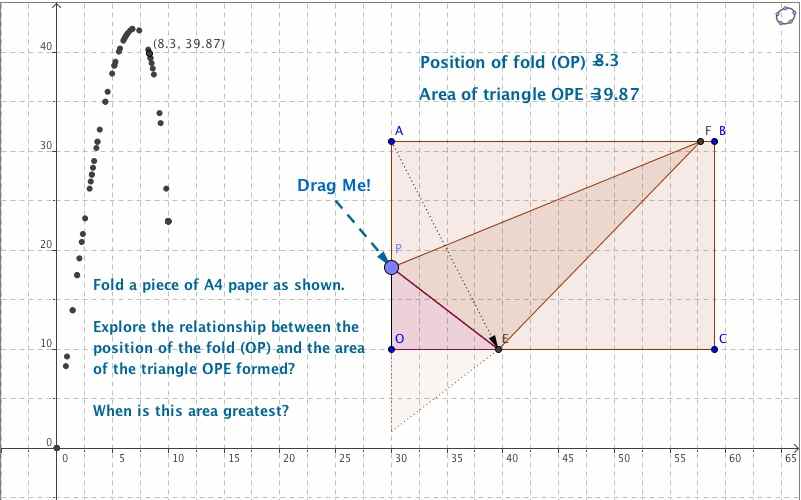Making Algebra Meaningful With Technology
Stephen Arnold
Download in PDF format
Download Meaningful Algebra Collection (zipped, ~350 KB)
Introduction
Top of Page
What does 2x + 1 mean to you?
What dominant image springs to mind?
Do you see an object or a process?
Do you think of a graph? A table of values?
Students who are successful in algebra have a rich repertoire of images compared to those who do not. As teachers, we need to build these images deliberately and with care.
1. Begin with NumberTop of Page
|

|
2. Introduce Graphs CarefullyTop of Page
|

|
3. Build Algebraic Meaning using Real LanguageTop of Page
|

|
4. Build Firm Concrete FoundationsTop of Page
5. Use Appropriate Tools and RepresentationsTop of Page
|
|
6. Bring it all together with ModellingTop of Page
|

|
7. Conclusion
Top of Page
Why do I like to use technology in my Mathematics teaching?
It helps my students to be better learners:
o It scaffolds their learning, allowing them to see more and to reach further than would be possible unassisted
o Good technology extends and enhances their mathematical abilities, potentially offering a more level playing field for all
o It is inherently motivating, giving them more control over both their mathematics and the ways that they may learn it
o Good technology encourages them to ask more questions about their mathematics, and offers insight into the true nature and potential of mathematical thinking and knowledge
Good technology also helps me to be a better teacher:
o It offers better ways of teaching, new roads to greater understanding than was previously possible
o It encourages me to talk less and to listen more: Students and teacher tend to become co-learners
o It makes my studentsŐ thinking public, helping me to better understand their strengths and weaknesses, and to better evaluate the quality of my own teaching and of their learning
o It frequently renews my own wonder of Mathematics, helping me to think less like a mathematics teacher and more like a mathematician
Why do I love using technology in my mathematics classroom?
Because, like life, mathematics was never meant to be a spectator sport.




